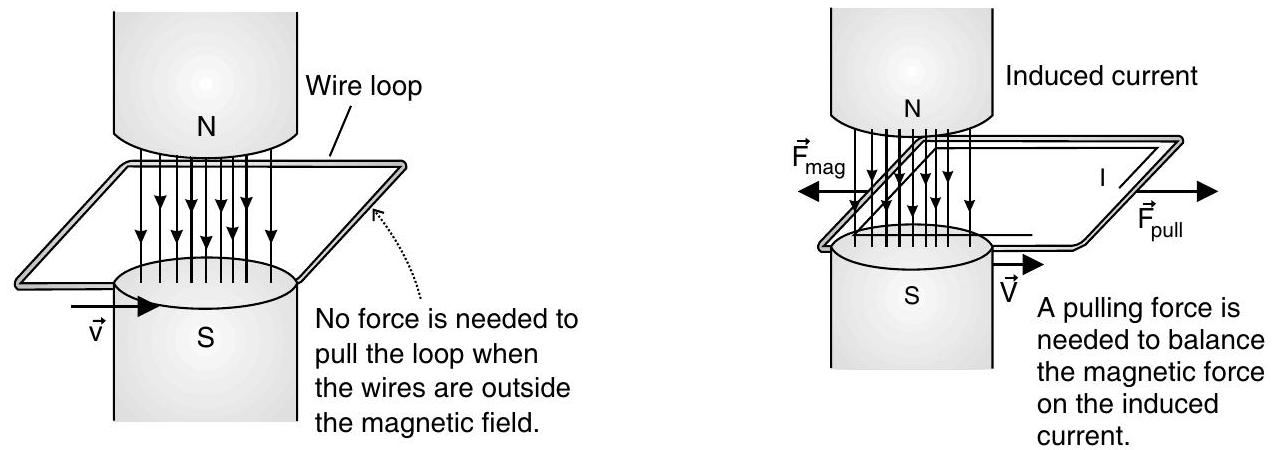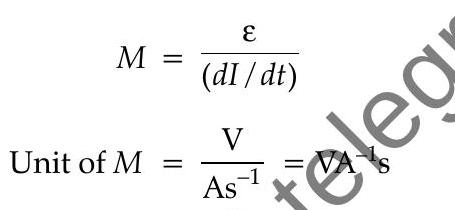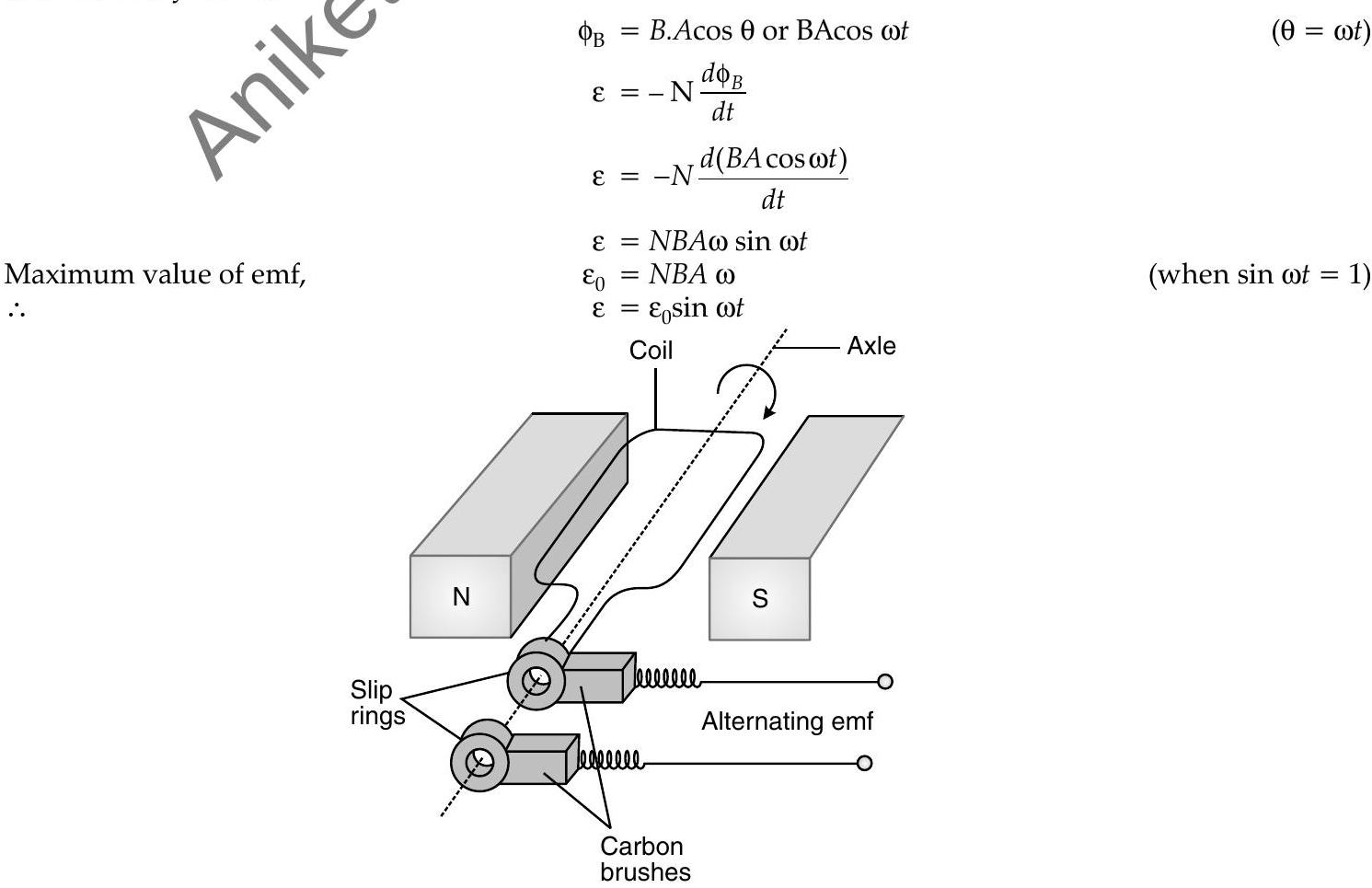electromagnetic-induction Question 19
Question: Q. 5. A metallic rod of length
(i) Derive the expression for the induced emf and the current in the rod.
(ii) Due to the presence of the current in the rod and of the magnetic field, find the expression for the magnitude and direction of the force acting on this rod.
(iii) Hence obtain the expression for the power required to rotate the rod.
C [O.D. Comptt. I, II, III 2014]
Show Answer
Solution:
Ans. (i) In one revolution
Change of area,
(a) Induced emf,
(b) Induced current in the rod,
(ii) Force acting on the rod,
The external force required to rotate the rod opposes the Lorentz force acting on the rod/ external force acts in the direction opposite the Lorentz force.
(iii) Power required to rotate the rod
[CBSE Marking Scheme, 2014]
Detailed Answer :
(i) In a revolution, change in Area
Given,
Now, induced emf
(ii)
According to law, the external force acts in the directionopposite toe lorentz force.
Power

TOPIC-2
Eddy Currents, Selfand Mutual Induction and AC Generator
Revision Notes
Eddy Currents
- Current loops inducedin moving conductors are called eddy currents. They can create significant drag, called as magnetic damping.
Eddy currents give rise to magnetic fields that oppose any external change in the magnetic field.
Mathematically,
Eddy currents are induced electric currents that flow in a circular path

Eddy currents flowing in a material will generate their own secondary magnetic field that opposes the coil’s primary magnetic field.
Mutual Induction
The production of induced emf in a circuit, when the current in the neighbouring circuit changes is called mutual induction.
When the circuit of the primary coil is closed or opened, deflection is produced in the galvanometer of the secondary coil. This is due to the mutual induction.
- The number of turns of primary and secondary coils.
- The shape, size or geometry of the two coils. i.e., the area of cross-section and the length of the coils.
Coefficient of mutual induction :
- Suppose, the instantaneous current in the primary coil is
where,
The induced emf
The negative sign is in accordance with the Lenz’s law i.e., the induced emf in the secondary coil opposes the variation of current in the primary coil.
From the equation (ii), we find
Therefore,

If
Self-Induction :
The production of induced emf in a circuit, when the current in the same circuit changes is known as selfinduction.
Suppose the instantaneous current in the circuit Is
where,
The induced emf
The negative sign is in accordance with the Lenz’s law i.e., the induced emf opposes the variation of current in the coil. From the equation (ii), we find :
Then, the coefficient of self-induction is the ratio of induced emf in the circuit to the rate of change of the current in the circuit.
Unit of
If a rod of length
In general, we have,
If a metallic rod of length
Here,
Inductance in the electrical circuit is equivalent to the inertia (mass) in mechanics.
- When a bar magnet is dropped into a coil, the electromagnetic induction in the coil opposes its motion, so the magnet falls with acceleration less than that due to gravity.
The inductance of a coil depends on the following factors :
- area of cross-section,
- number of turns
- permeability of the core.
D Unit of induction,
The inductance of a circular coil is given by :
or
The inductance of a solenoid of length
or
Here,
If two coils of inductance
where,
The value of
For perfectly coupled coils,
Eddy currents do not cause sparking.
If a current
is set up in a coil of inductance , then the magnetic field energy stored in it is given by
AC Generator
It converts mechanical energy into electrical energy.
- It is based on the principle of mutual induction. It has mainly three components :
- Rotator Coil : It can rotate about an axis on a shaft.
- Stator Coil : It provides magnetic field.
- Commutator : It is pair of slip rings and carbon brushes. It will facilitate flow of current between moving coil and stationary circuit.

Know the Terms
Back emf : emf generated by a running motor due to coil that turns in a magnetic field which opposes the voltage that powers the motor.
- Inductor : It is a device used to store electrical energy in a from of magnetic field when electric current flows.
emf produced by an electric generator :
Know the Formulae
For Mutual Inductor
The inductance in series is given by
Mutual Inductance of two coils is given by
where,






